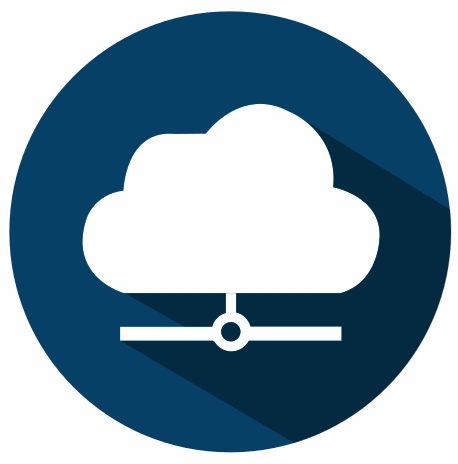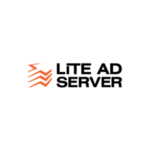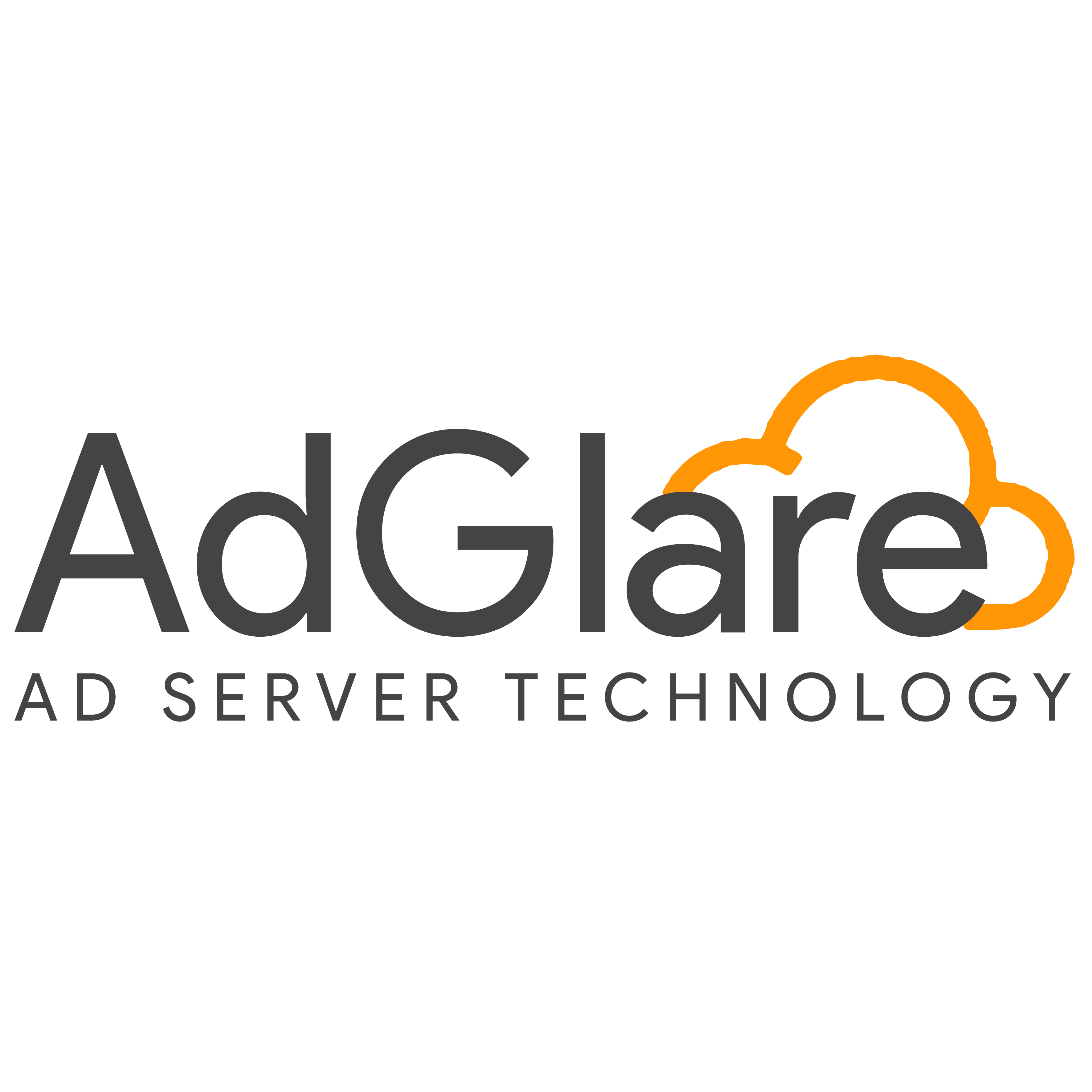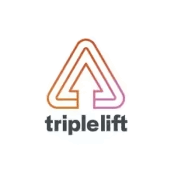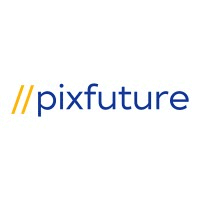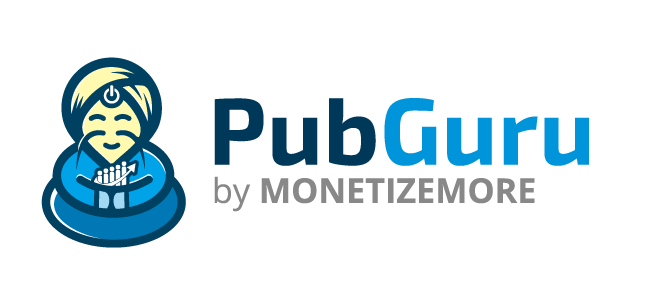Yes, most Publisher Ad Server Software may be accessible from numerous devices and platforms. These applications are intended to provide publishers with a seamless advertising experience across a variety of devices, including mobile, desktop, and tablets. They also support a variety of operating systems and browsers, allowing advertisers to maximize their reach and interaction. This helps publishers increase revenue while also providing tailored ads to the proper audience.
List of 20 Best Publisher Ad Server Software
TrafficManager Ad is a ad server software with unrivaled features including A/B testing, banner control, native ad placement, and seamless tracking of desktop and mobile campaigns. This intuitive tool simplifies the creation and management of ad netw...Read More TrafficManager Ad
Adserver.Online - the leading SaaS ad server and ad manager designed specifically for publishers, advertisers, agencies, and ad networks. Our powerful product offers a comprehensive solution with a plethora of features to streamline your ad managemen...Read More Adserver.Online
Google AdSense is a leading advertising solution from Google that enables website owners and content creators to monetize their online content. Through AdSense, publishers can display targeted advertisements on their websites or YouTube channels and...Read More Google AdSense
AdPlayer.Pro is a outstream video advertising solution for agencies, publishers, and corporate clients. Our all-in-one platform includes a customizable HTML5 player with built-in ad capabilities, advanced ad serving capabilities, and even a white-lab...Read More AdPlayer.Pro
OrbitSoft Ad Server is a ad management solution that surpasses all others with its unmatched ease of use and efficiency. With advanced targeting options, real-time analytics, and customizable features, it maximizes ad revenue and improves campaign pe...Read More OrbitSoft Ad Server
Lite Ad Server - the perfect solution for all your advertising needs. Designed with ease and efficiency in mind, this software simplifies the management of ad campaigns, allowing you to focus on strategic decisions. Its intuitive interface and powerf...Read More Lite Ad Server
UpRival is a all-in-one solution for your advertising needs. With UpRival, you can effortlessly create, serve, and optimize campaigns across all platforms - including cloud, SaaS, and mobile devices. Say goodbye to juggling multiple systems and simpl...Read More UpRival
Adzerk is a advertising solution designed to create dynamic ad servers for showcasing native ads, promoting sponsored listings, and featuring in-house content. Whether accessed through cloud or SaaS, or on the web, Android, or iOS platforms, Adzerk o...Read More Adzerk
AdsHelper is a digital marketing tool that is perfect for small and medium-sized businesses. With its easy-to-use features, you can create eye-catching banners, design effective landing pages, collect leads, and analyze valuable data. This cloud-base...Read More AdsHelper
a Website Advert Manager with Analytics is a banner management tool for yA website. Gain valuable insights and optimize ad performance across all yA websites with its unlimited usage capabilities. Monetize yA website seamlessly with and user-friendly...Read More Website Advert Manager with Analytics
a software, Header Bidding. With cutting-edge strategic analytics and demand optimization functionalities, it simplifies ad inventory and maximizes banner performance for targeted conversions. It also provides seamless management of mobile, native, r...Read More Header Bidding
Muvi Ads: a ad serving platform specifically designed for e-commerce businesses, video-on-demand services, and live streaming platforms. Effortlessly host a range of ad formats and seamlessly deliver them on your website and mobile applications. Enha...Read More Muvi Ads
AdGlare Ad Server is a ad management tool that provides a variety of features such as A/B testing, ad inventory management, optimization, and conversion tracking. It also supports various types of ads including mobile, native, email, rich media, and...Read More AdGlare Ad Server
Clickky is a platform built specifically for the hospitality industry. It simplifies the process of finding the right technology and services for businesses, leading to improved operations. From ordering and delivery to workforce management, Clickky...Read More Clickky
GreedyGame AdX, a reliable ally of Google AdX, designed for app publishers and developers to optimize their revenue generation. Our user-friendly platform allows for complete management of inventory, empowering users to monetize their apps seamlessly...Read More GreedyGame AdX
TripleLift, the top-tier ad server platform that empowers businesses to seamlessly create, distribute, and track the performance of advertisements on various channels. Specializing in programmatic advertising, TripleLift caters to a variety of sector...Read More TripleLift
PixFuture is a advertising platform engineered and managed by a team of experienced individuals with a proven track record in the publishing industry. Our programmatic approach enables effective promotion of your products and services on popular webs...Read More PixFuture
PubGuru is a ad tech platform that elevates your monetization strategy. Our cutting-edge tool, PubGuru ad Traffic Cop, combined with a team of 260+ skilled ad ops experts, empowers publishers, app developers, and enterprises to optimize ad revenue an...Read More PubGuru
Experience solution for Publishers and Ad Networks with Aniview Ad Server. Our innovative platform offers seamless distribution of video ads on all channels - from web to mobile to CTV/OTT. With AI-powered optimization, Aniview Ad Server ensures opti...Read More Aniview Ad Server
Admiral is a Visitor Relationship Management (VRM) platform designed to enhance publishers revenue by fostering strong connections with their audience. With a user-friendly single-tag solution, Admiral offers a comprehensive range of features includi...Read More Admiral
Learn More About Publisher Ad Server Software
- What Is Publisher Ad Server Software?
- What Are The Recent Trends In Publisher Ad Server Software?
- Benefits Of Using Publisher Ad Server Software
- Important Factors To Consider While Purchasing Publisher Ad Server Software?
- What Are The Key Features To Look For In Publisher Ad Server Software?
- Why Do Businesses Need Publisher Ad Server Software?
- How Much Time Is Required To Implement Publisher Ad Server Software?
- What Is The Level Of Customization Available In Publisher Ad Server Software?
- Which Industries Can Benefit The Most From Publisher Ad Server Software?
- Conclusion
What Is Publisher Ad Server Software?
Publisher ad server software is an essential tool for online publishers who want to effectively manage and optimize their ad inventory. It is a cloud-based platform that allows publishers to display and track adverts across their websites, applications, and other digital platforms. The program helps publishers streamline their ad operations by offering a wide range of capabilities such as ad scheduling, targeting options, and performance tracking.
A publisher ad server allows publishers to effortlessly manage ad placement and rotation, assuring optimum exposure and income. One of the primary advantages of using publisher ad server software is the flexibility to interface with many ad networks and demand partners. This enables publishers to tap into a larger pool of advertising options and monetise their content more efficiently.
Furthermore, publisher ad server software offers detailed reporting and analytics, offering publishers significant insights into their ad effectiveness. This allows them to make data-driven decisions and improve their marketing approach to achieve greater outcomes. When choosing a publisher ad server software, check for features like real-time bidding, support for numerous formats and ad types, and dependable customer service.
It is also critical to select software that can manage huge quantities of traffic while also offering customisable solutions to meet the specific needs of each publisher. Investing in a reputable publisher ad server software can not only improve ad administration but also help publishers increase revenue. Publisher ad server software, with its extensive capabilities and integrations, is an essential tool for publishers trying to stay ahead in the competitive digital advertising industry.
What Are The Recent Trends In Publisher Ad Server Software?
The world of digital advertising is always changing, and publisher ad server software is no exception. As the need for targeted and tailored ads grows, publishers are looking for creative ad server solutions that will help them stay ahead of the competition.
Let's explore, we'll look at the latest trends in publisher ad server software and how they can help publishers maximize revenue while also providing a smooth ad experience for their audiences.
1. Enhanced Targeting Capabilities: One of the important trends in the publisher ad server software industry is the introduction of enhanced targeting features. Ad servers can now analyze data in real time and provide highly tailored advertising based on user interests, activity, and demographics thanks to technology such as artificial intelligence and machine learning. This not only assures a better user experience, but also increases the success of ad campaigns, resulting in improved click-through rates and conversions.
2. Programmatic Ad Buying: Programmatic advertising has transformed the way ads are purchased and sold. This trend has also influenced the publisher ad server software market, with an increasing number of ad servers providing programmatic capabilities. Programmatic ad buying automates the ad buying process, making it more efficient and cost effective. It also allows publishers to reach a larger audience and command greater bids for their ad space, resulting in more money.
3. Ad Fraud Detection And Prevention: Ad fraud is a serious concern for publishers since it may lead to considerable revenue losses. To counteract this issue, ad server software now includes powerful fraud detection and protection features. These systems use data analysis and machine learning algorithms to detect and prevent fraudulent activity, ensuring that publishers receive only legitimate ad clicks and impressions.
4. Support For Various Ad Formats: Today's publishers must appeal to a multitude of platforms, including desktop, mobile, and linked devices. As a result, ad server software must support a diverse selection of ad formats in order to provide consistent ad delivery across several media. The current ad servers enable a variety of formats, including display advertisements, video ads, native ads, and interactive ads, allowing publishers to select the optimum format for their content and target audience.
5. Data Monetisation Opportunities: Data is becoming a valuable asset in the digital advertising world, so publishers are seeking for methods to monetize it. Ad server software now provides prospects for data monetization by allowing publishers to sell their first-party data to advertisers for targeted advertising. This not only increases revenue for publishers, but it also helps to provide a more tailored and relevant ad experience for users.
Benefits Of Using Publisher Ad Server Software
Publisher ad server software is an essential tool for online publishers that want to increase their website's advertising revenue. It serves as a centralized platform, allowing publishers to easily manage their ad inventory and deliver customized ads to their audience.
Let's explore, we'll look at the advantages of using publisher ad server software and why it's a must-have for publishers.
1. Centralized Advertising Management: One of the primary benefits of adopting publisher ad server software is that it enables publishers to manage all forms of adverts from a single platform. This simplifies ad administration and eliminates the need for numerous tools, lowering the likelihood of errors and delivering a seamless experience for both publishers and advertisers.
2. Improved Ad Targeting: Publisher ad server software provides extensive targeting features, allowing publishers to deliver highly targeted advertising to their audience. This is possible because the software lets you to create bespoke audiences based on a variety of criteria, including geographic area, device, browsing behavior, and more. This leads to higher click-through rates and improved overall performance of ad campaigns.
3. Real-Time Reporting: Publisher ad server software offers real-time reporting, allowing publishers to get accurate and up-to-date information on their ad performance. This enables publishers to make more informed decisions and improve their ad strategies for optimal revenue production. Real-time reporting also assists publishers in troubleshooting any issues with ad distribution, providing a seamless and uninterrupted user experience.
4. Multiple Ad Formats: Publisher ad server software can handle a variety of ad types, including display ads, native ads, video ads, and more. This allows publishers to select the most appropriate ad format for their website and target certain goals. With the rise of programmatic advertising, publishers must be able to accommodate different ad formats in order to compete in the rapidly expanding digital advertising business.
5. Improved Monetization Opportunities: Publisher ad server software provides efficient ad management and improved targeting, which leads to more income options for publishers. Publishers may enhance their revenue by delivering relevant and engaging adverts to their audience. Furthermore, features such as real-time bidding and header bidding enable publishers to sell their inventory at the greatest potential price, increasing overall revenue.
Important Factors To Consider While Purchasing Publisher Ad Server Software?
When it comes to choosing Publisher Ad Server Software, consumers should consider many essential elements to make an informed purchase. These considerations include features and functions, pricing, customer support, integrations, and user interface. Features and functionalities: The first and most important aspect to consider when selecting Publisher Ad Server Software is the variety of features and functionality it provides.
The program should be capable of meeting your individual demands and specifications, including ad placement, targeting options, ad formats, reporting and analytics, and other features. Look for software that provides a broad range of functions for both publishers and advertising. Pricing: The software's pricing structure is an important issue to consider.
Some software vendors charge a flat cost, while others employ a pay-per-use basis. It is critical to understand the pricing structure and determine which one best suits your budget and needs. Before making a final selection, make sure there are no hidden prices or additional fees. Customer assistance: When selecting software, strong customer assistance is essential. Look for a service that provides timely and dependable help, whether via email, phone, or live chat.
They should also offer training and tutorials to help you become acquainted with the software and troubleshoot any problems that may emerge. Integrations: It is critical to consider the integrations provided by Publisher Ad Server Software. Ensure that it functions seamlessly with other critical tools and platforms, such as ad networks, exchanges, demand-side platforms (DSPs), and supply-side platforms (SSPs).
This will guarantee that diverse systems run smoothly and communicate well. User Interface: The software's interface should be simple and intuitive. It should be simple to use and understand, especially for individuals with little technical understanding. A cluttered or unclear interface might cause inefficiencies and impede your ad activities.
What Are The Key Features To Look For In Publisher Ad Server Software?
When it comes to selecting the best Publisher Ad Server Software, numerous important qualities should be examined. These characteristics can ultimately improve the effectiveness and efficiency of your advertising campaigns, resulting in higher income and better overall results.
Here are the key things to look for in Publisher Ad Server Software:
1. Ad Management Features: A decent Publisher Ad Server Software should include extensive ad management features that enable publishers to quickly develop, manage, and measure ad campaigns. This includes tools like ad scheduling, targeting possibilities, and real-time reporting.
2. Ad Format Handle: The program should handle a variety of ad formats, such as display ads, video ads, native ads, and others. This will allow publishers to select the most effective format for their audiences and advertisers.
3. Data Tracking And Analysis: Detailed data tracking and analysis technologies are critical for determining the effectiveness of your marketing campaigns. Look for software that supports real-time reporting, advanced analytics, and integration with third-party tracking solutions.
4. Ad Exchange Integration: Ad exchange integration connects publishers to a broad network of advertisers and ad exchanges, enhancing the potential for ad revenue. Look for software that integrates seamlessly with leading ad exchanges like Google Ad Exchange and OpenX.
5. Ad Revenue Optimization: One important aspect to look for in Publisher Ad Server Software is ad revenue optimization. This tool employs algorithms to automatically optimize ad placement and formats, maximizing revenue for publishers.
6. Mobile Optimization: Because the vast majority of internet consumers access material via mobile devices, it is critical that the ad server software supports mobile optimization. This includes the ability to offer tailored adverts to mobile users and monitor performance on mobile devices.
7. Scalability: As your website or app expands, your ad serving requirements will grow as well. It is critical to select software that can manage high levels of traffic and ad requests without compromising performance.
8. Customer Help: Look for a software company that provides dependable and timely customer help. This ensures that any technical issues or questions are resolved promptly, allowing you to concentrate on your advertising efforts.
By taking these major aspects into account, you can make an informed decision on the best Publisher Ad Server Software for your business. Remember to examine your specific requirements and budget when selecting software that can grow with your company and adapt to shifting market trends.
Why Do Businesses Need Publisher Ad Server Software?
To stay competitive in the ever-changing digital media market, firms must constantly alter their advertising strategy. One important tool for this is publisher ad server software, which acts as a central platform for managing and optimizing ad campaigns on websites and apps.
The following are the top reasons why firms should consider investing in publisher ad server software:
1. Streamlined Ad Management: Managing several ad campaigns across multiple channels may be difficult and time-consuming for businesses. Publisher ad server software makes this process easier by offering a unified platform for managing all ad campaigns, from planning and optimization to reporting and analytics.
2. Increased Revenue Potential: Publisher ad server software optimizes ad delivery by guaranteeing that the right ad is shown to the right audience at the right time. This not only enhances the user experience but also increases ad click-through rates and conversions, allowing businesses to optimize their revenue potential.
3. Targeted And Personalized Advertising: By leveraging the powerful targeting capabilities of publisher ad server software, businesses can adapt their ads to attract a specific audience based on demographics, interests, and behaviors. This enables more effective and targeted advertising, which leads to increased engagement and conversions.
4. Efficient Ad Delivery: Publisher ad server software uses algorithms to assess and forecast the best ad placement for maximum results. This means that firms may distribute their adverts at the most appropriate times, resulting in enhanced efficiency and higher ROI.
5. Real-Time Tracking And Reporting: One of the primary advantages of publisher ad server software is its ability to measure and report ad performance in real time. This allows firms to make data-driven decisions and tweak their strategies to achieve the greatest results.
How Much Time Is Required To Implement Publisher Ad Server Software?
The time required to implement Publisher Ad Server program varies according on the individual program and the publisher's needs. However, on average, the installation process can last anywhere from a few days to a few weeks. This encompasses the setup, training, and testing phases. During the setup process, the software must be installed and integrated with the publisher's website or platform.
This may usually be completed within a day or two, depending on the complexity of the website. The training step is critical for ensuring that the publisher's crew is comfortable with the program and its features. This phase might last from a few days to a week, depending on the size of the team and their level of experience with ad serving. After the program is installed and the staff has been educated, the testing phase begins. During this phase, the publisher can detect and rectify any technical difficulties before going live with the ad server.
This phase might last anything from a few days to a week, depending on how much testing is required. Overall, the time required to adopt Publisher Ad Server Software is usually small when compared to the long-term benefits of streamlining ad operations and increasing revenue. It is critical that publishers collaborate closely with their ad server supplier during the implementation process to guarantee a smooth and efficient transition.
What Is The Level Of Customization Available In Publisher Ad Server Software?
Publisher ad server software provides a wide number of customization possibilities, allowing publishers to personalize their advertising tactics to their individual needs and objectives. With this level of personalization, publishers can provide their audiences with a unique and personalized experience, resulting in enhanced engagement and ROI. One important aspect of configurable ad server software is the ability to develop and manage numerous ad types.
Publishers can select from a range of choices, including display advertisements, video ads, native ads, and more. This not only allows them to exhibit their ad inventory in a variety of ways, but it also accommodates their audience's diverse preferences. Ad server software's targeting features provide an additional level of customisation.
Publishers can target their adverts based on demographics, interests, activity, and geography. This kind of detailed targeting guarantees that the correct advertisements reach the right people, boosting the likelihood of conversion. In addition to targeting, publishers have control over the placement of their adverts. They can target certain portions of their website or app for their advertising, ensuring that they are put in the most effective and visible spots for maximum impact. Furthermore, customization possibilities include ad timing and frequency capping.
Publishers can schedule their ads to show on specific days and hours, as well as limit how many times a user sees the same ad. This guarantees that the audience is not overwhelmed with repetitive adverts, resulting in a more enjoyable user experience. Overall, the level of flexibility offered by publisher ad server software enables publishers to develop a bespoke and optimal advertising strategy that suits their specific requirements. This not only aids in the development of a strong brand identity, but it also raises the likelihood of reaching the right audience with the correct message at the appropriate moment.
Which Industries Can Benefit The Most From Publisher Ad Server Software?
Publisher ad server software is an invaluable resource for digital publishers, particularly those in industries that rely significantly on online advertising for revenue. This robust platform enables publishers to successfully manage and optimize their ad inventory, improve ad performance, and, ultimately, increase advertising revenue. So, which sectors would profit the most from deploying publisher ad server software?
Let's have a closer look.
1. Digital Publishing: The most obvious business that will profit greatly from publisher ad server software is digital publishing. With an expanding number of readers consuming information online, digital publishers must constantly monetise their content via smart advertising tactics. Publisher ad server software enables publishers to easily manage their ad inventory, run targeted ad campaigns, and optimize ad performance, all while providing a great user experience to their readers.
2. Ecommerce: E-commerce enterprises frequently rely significantly on advertising to generate sales and conversions. Publisher ad server software can transform e-commerce sites by enabling them to display highly targeted and relevant adverts to their visitors. With the appropriate ad server, e-commerce enterprises can increase ad revenue while providing their customers with a flawless shopping experience.
3. Online Media Outlets: Advertising is a major source of revenue for media businesses ranging from online magazines to news websites. However, without the necessary tools, controlling and improving their ad inventory can be a difficult undertaking. Publisher ad server software allows media outlets to successfully manage their ads, track their effectiveness, and make data-driven decisions to increase income.
4. Mobile Application Developers: In today's digital landscape, mobile applications have emerged as an effective platform for businesses to promote their products or services. Publisher ad server software enables mobile app makers to provide customized ads to app users, thereby improving ad effectiveness and, eventually, income. Furthermore, ad server software can assist mobile app developers in effectively monetizing their apps through optimal ad placement.
5. Online Gaming Industry: The online gaming sector is quickly expanding, with numerous prospects for advertisers. Publisher ad server software allows game publishers to monetise their games through in-game advertising and maximize advertising revenue. Ad server software also enables tailored ad delivery, assuring a smooth gaming experience for users.
Conclusion
To summarize, selecting the correct publisher ad server software is critical for publishers looking to efficiently manage and optimize their online advertising operations. With a variety of features and capabilities, it is critical to examine your individual needs and goals when choosing the best software for your organization. First and foremost, ensure that the program is scalable enough to handle your present and future traffic and inventory levels.
To improve performance and revenue, seek out software that provides advanced targeting options, ad format flexibility, and robust reporting features. Consider the ease of use and compatibility with other programs you may already be using. A user-friendly interface and seamless integration can help you save time and resources while focusing on expanding your business.
Conduct extensive research and study reviews from other publishers to gain a better grasp of the software's performance and customer service. Also, don't be hesitant to request a demo or trial period to try the program and determine whether it matches your requirements. Remember that investing in a dependable and effective publisher ad server software is a long-term decision, so choose your choice carefully. The appropriate software can help you improve your ad operations, enhance revenue, and eventually achieve success in the extremely competitive world of online publishing.
Publisher Ad Server Software FAQ's
Can Publisher Ad Server Software Be Accessed Across Multiple Devices And Platforms?
Is Publisher Ad Server Software Future-Proof And Adaptable To Emerging Technologies Like AI, Blockchain Or IoT?
Yes, Publisher Ad Server Software is intended to be future-proof and adaptable to new technologies such as AI, blockchain, and IoT. It uses innovative technologies like machine learning and real-time data analytics to optimize ad placements and improve outcomes for publishers. Its adaptable and scalable architecture allows for easy integration with new technologies, ensuring that publishers remain competitive in the ever-changing digital advertising industry.
Is There A Free Trial Offered To Assess Publisher Ad Server Software Before Committing?
Yes, many publishers and ad server software suppliers provide a free trial period in which users can try the product before committing to a subscription. This enables publishers to test the ad server's features and functioning and assess whether it fits their requirements. However, the length of the trial period and availability may differ between providers, so it is important that you explore and evaluate possibilities before deciding on a platform.
Does Publisher Ad Server Software Offer Data Security Features And Meet Regulatory Compliance Standards?
Yes, Publisher Ad Server Software often includes robust data security features such as encryption, access limits, and scheduled backups to secure sensitive user data. This software frequently fulfills regulatory compliance standards, such as the General Data Protection Regulation (GDPR) and the California Consumer Privacy Act (CCPA), to safeguard consumers' data privacy and security. When using Publisher Ad Server Software, publishers can be confident that their data is secure and in compliance with industry rules.
Can Publisher Ad Server Software Integrate Seamlessly With Existing Tools And Platforms?
Yes, most publisher ad server technologies can work easily with existing tools and platforms. The extent of interaction varies, but most ad servers provide interface with popular content management systems, data management platforms, and analytics tools. This promotes a smooth flow of data and enables consistent reporting and optimization. You can also tweak the integrations to meet your specific requirements.


